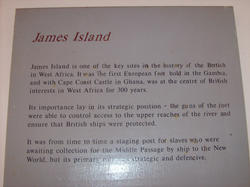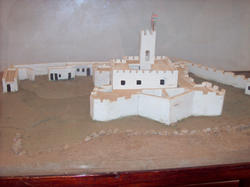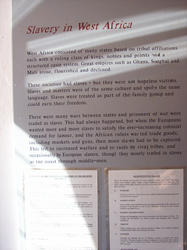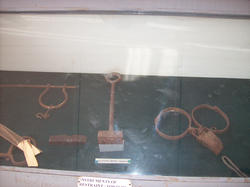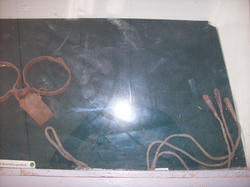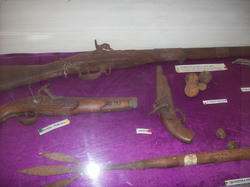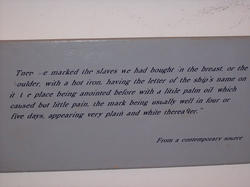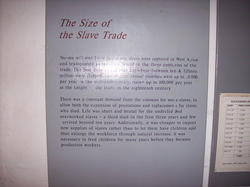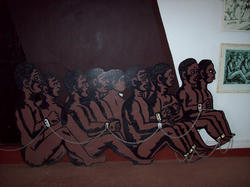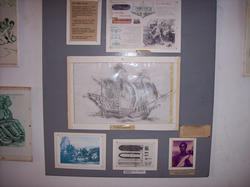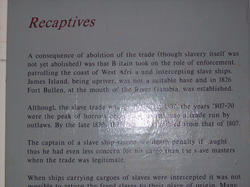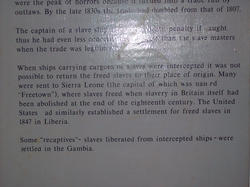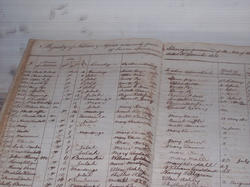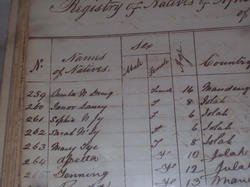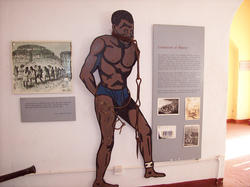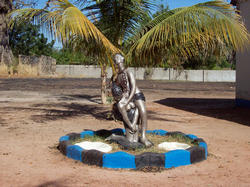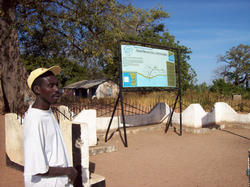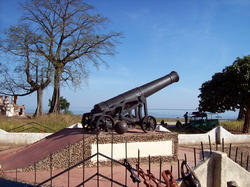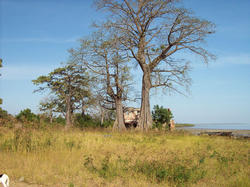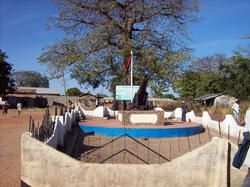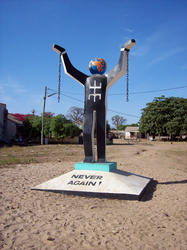James Island
The James Island Museum (Juffureh, Gambia)
Because it was so late in the day, we did not take the canoe ride over to James Island, but we did visit the museum. These pictures tell a lot of the story of slavery in The Gambia and West Africa. If you click on the picture to enlarge it, you may be able to read some of the text on the displays (use your browser's "back" button to return to this page). James Island, like Goree in Senegal, was a holding point for captured slaves. There, they waited for the ships to collect them. Eventually, slavery was oulawed in West Africa and the British army moved in to enforce the new laws. The army kept watch from James Island and the coastline and captured (by force) many ships that still tried to come through to capture slaves, and ships that had already picked up slaves further up the coastline.
